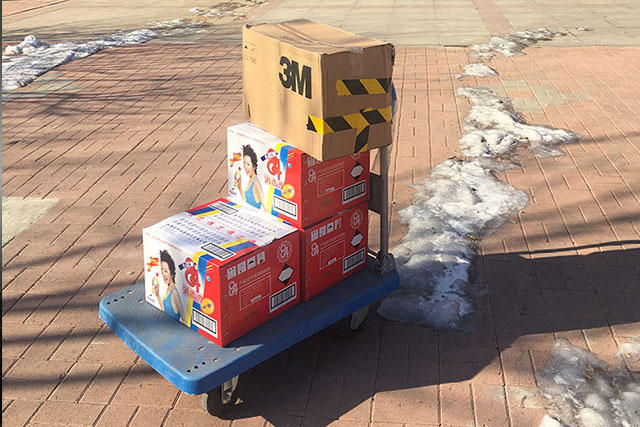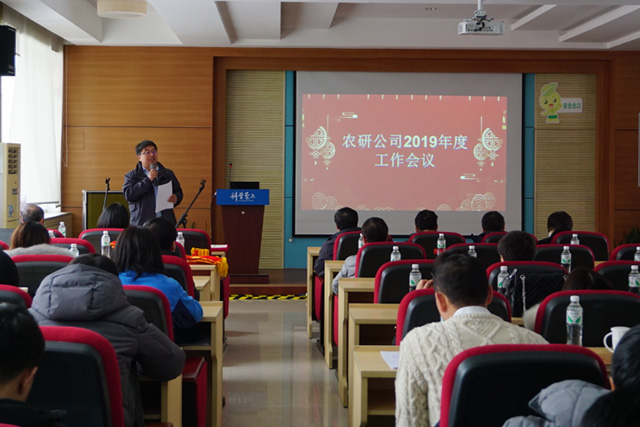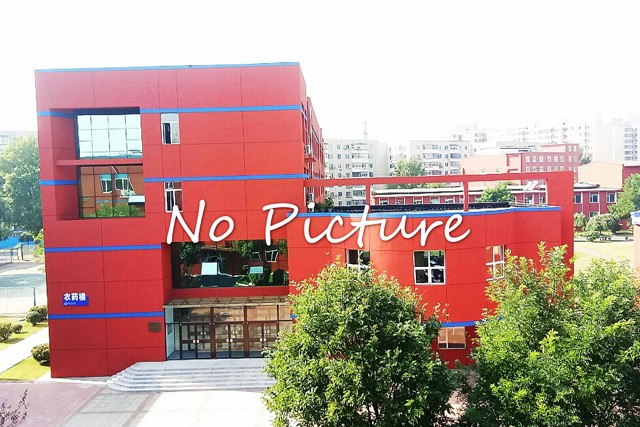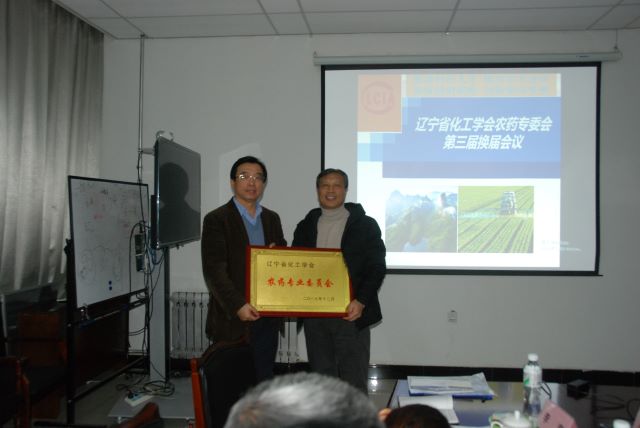Home > News Center
Promote sustainable development of prevention and control of pests
This Exchange gathered together the most cutting-edge consultation and technology on resistance governance in the industry, themed around “strengthening resistance governance, promoting sustainable development of prevention and control of pests”, and aimed at providing the best solution for prevention and control of agricultural insect pests and weeds, improving the overall prevention level, delaying the resistance development and promoting global pesticide resistance governance.
At the meeting, multiple experts of Agrochemicals R&D discussed about how to strengthen resistance governance and promote sustainable development of prevention and control of pests from innovation of pesticide variety, improvement of application technology, resistance monitoring of product, etc.
On March 8, 2018, the Sterilization R&D Team delivered a speech “Discovery and Performance of Herbicide Preventing and Eliminating Glyphosate Resistant Weed” at Shanghai International Pesticide Resistance Forum.
The governance of the herbicide resistant weed is the first difficulty placed in front of the whole world. Due to excellent broad-spectrum herbicidal activity and lower soil residue of glyphosate, and wide planting of herbicide resistant transgenic crops, it becomes the herbicide product with the first sales in the world. However, the resistance problem of weed has been very prominent for long-time and single use. So far, over 40 weeds have been published to generate resistance to glyphosate at present. In fact, besides resistant weeds, there are more than ten weeds with resistance to glyphosate, such as crab grass, piemarker, nightshade, polygonum, millet.
The weeds with resistance to glyphosate and the weeds which are difficult to prevent and control for glyphosate include broadleaved weeds and grassy weeds. While the present markets lack of herbicides with good cost performance and capable of preventing and controlling two resistant weeds or weeds which are difficult to prevent, so, to prevent and control glyphosate resistant weeds is a tricky subject to be thought and solved by agrochemical enterprises.
To solve the above problem, the Bactericide R&D Team has carried out research on design, synthesis and optimization by using “intermediate derivatization method”, and spent about 5 years in inventing novel herbicides capable of preventing and controlling many gramineous and broadleaved weeds and weeds with resistance to glyphosate, such as eleusine indica, horseweed herb, as well as weeds which are difficult to prevent and control, such as crab grass, piemarker, nightshade, polygonum. This herbicide has novel structure and broad herbicide controlling spectrum and good effects to prevent over 20 types of broadleaved and grassy weeds, etc. The activity and activity spectrum are superior to foreign similar product saflufenacil; it has good effects to resist glyphosate weeds, such as horseweed herb and eleusine indica which is insensitive to saflufenacil. It can either be used separated, or mixed. Test results show that, it has obvious synergistic interaction with glyphosate, which can solve the glyphosate resistance problem.
The research on resistance risk of insecticide in China has undergone a particularly bumpy process from nonexistence to existence. According to relevant provisions of Regulations on Pesticide Administration and Measures on the Management of Pesticide Registration, the Ministry of Agriculture has developed Requirements for Pesticide Registration Materials which was enforced from November 1, 2017. The provisions add requirements of registration of novel pesticide preparation for resistance risk research materials.
Shenyang Sinochem Agrochemicals R&D Co., Ltd. owned the most complete novel pesticide discovery system in China at present, and played a leading role in discovery of novel pesticide in China. The new insecticide tetrachlorantraniliprole launched in 2014 and the new acaricide SYP-9625 launched in 2017 had both had many repercussions in the market. While before launching, these two varieties were independently subject to research on resistance risks. This report first introduced the research on resistance risks of these two varieties, and provided reference experience on how to meet the resistance risk research materials required by registration of insecticide, and in the same time, it discussed about and deeply thought of how to face the insecticide resistance calmly and how to discover and develop insecticide by combining resistance prediction, monitoring and governance.
The bactericide resistance will not only make some bactericide varieties lose use value, but also may result in prevention failure of crop diseases, thus causing huge losses to agriculture. The Professor Si Naiguo of Agrochemicals R&D introduced the bactericide type which is easy to generate resistance and the potential relations between the bacteria resistance and development of new product in detail. For resistance governance, he proposed three suggestions: 1) developing bactericides with new structures and new action mechanisms; 2) scientific and reasonable use of bactericide; 3) multi-site protective bactericide is the best choice of mixture.
In addition, the meeting also invited experts engaged in research on disease pest and weed resistance to deliver a speech, and the Researcher Liang Diyun of National Agricultural Technology Extension Service Center, the Researcher Zhang Chaoxian of Institute of Plant Protection, Chinese Academy of Agricultural Sciences, Professor Shen Jinliang of Nanjing Agricultural University, Professor Gao Xiwu of China Agricultural University, Professor Ji Mingshan of Shenyang Agricultural University, etc. gave comprehensive resistance governance measures for national resistance of insect pests and weeds, in order to propose ideas for developing novel pesticide preparation variety and delaying resistance development, and discuss about the transformation and upgrading way of Chinese pesticide enterprises.
By virtue of this meeting, the Pesticide Professional Committee set up a pest resistance management working team, so as to strengthen research and popularization of farmland pest resistance governance technology, increase the technical level of farmland resistance disease pest and weed governance, promote demonstrative popularization of new technology and new product of disease pest and weed prevention, and guide peasants and pesticide dealers how to use pesticide scientifically.
The experts of Agrochemicals R&D delivered wonderful speeches at this CAC forum. Doctor Chou Jingyu, the Director of Preparation R&D Department gave experience sharing on “how to broaden the pesticide component in the seed treatment agent” in the “4th International Symposium of Seed Treatment Technology”. After analysis for the current situation of seed treatment agent in China, Doctor Chou Jingyu focused on introducing the development of the foreign seed treatment agent, how to broaden the pesticide component of the seed treatment agent according to the situation of China. For problems in the seed treatment process, Doctor Chou Jingyu summarized single action target, poor specificity, serious product homogeneity, registration chaos and prominent resistance problem. He thought that, the key cause was lacking of effective component in independent innovation.
When discussing about how to broaden the independent innovation of the seed treatment agent, Doctor Chou Jingyu proposed two ways by reference to foreign cases: development of brand new structure and use of old drug. The former is featured by novel action mechanism, strong exclusiveness, safety, high efficiency and low toxicity; the latter is featured by high efficiency and safety, strong systemic property and low cost. With rapid development of Chinese pesticide manufacturing industry, use of old drug is very suitable for the situation of China, while the development of some pesticides will accelerate updating of seed treatment agent product. Doctor Chou also pointed out the development direction of seed treatment agent in China: ① exploration of new formulation of traditional pesticide, application of traditional pesticide which is efficient, systemic and safe to seed treatment; ② R&D of novel pesticide with brand new structure, increasing pesticides with novel structure and unique action mechanism year by year, more attention to biological pesticides and effective components with health care effects, abroad market prospect; ③ mixture of different effective components, such as mixture of insecticide and bactericide, which can control pests and diseases; the mixture of new drug and traditional pesticide can solve the resistance problem of the traditional pesticide, and the mixture of different action mechanisms can enlarge the prevention spectrum of pests and diseases.
Previous:“Bioassay Dream” of “Bioassay Person”
Next:Coming soon
Recommended news






